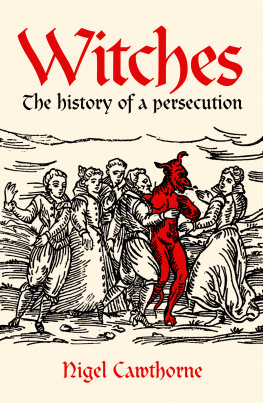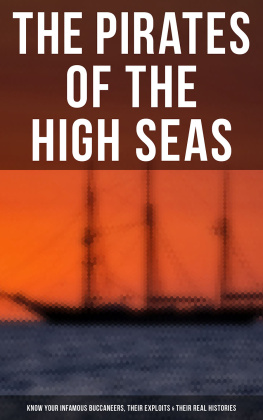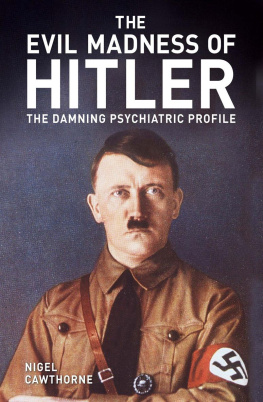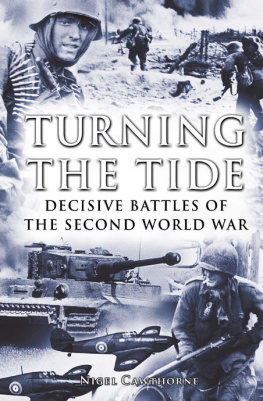Nigel Cawthorne - A History of Pirates: Blood and Thunder on the High Seas
Here you can read online Nigel Cawthorne - A History of Pirates: Blood and Thunder on the High Seas full text of the book (entire story) in english for free. Download pdf and epub, get meaning, cover and reviews about this ebook. year: 2003, publisher: Arcturus, genre: Adventure. Description of the work, (preface) as well as reviews are available. Best literature library LitArk.com created for fans of good reading and offers a wide selection of genres:
Romance novel
Science fiction
Adventure
Detective
Science
History
Home and family
Prose
Art
Politics
Computer
Non-fiction
Religion
Business
Children
Humor
Choose a favorite category and find really read worthwhile books. Enjoy immersion in the world of imagination, feel the emotions of the characters or learn something new for yourself, make an fascinating discovery.

- Book:A History of Pirates: Blood and Thunder on the High Seas
- Author:
- Publisher:Arcturus
- Genre:
- Year:2003
- Rating:4 / 5
- Favourites:Add to favourites
- Your mark:
- 80
- 1
- 2
- 3
- 4
- 5
A History of Pirates: Blood and Thunder on the High Seas: summary, description and annotation
We offer to read an annotation, description, summary or preface (depends on what the author of the book "A History of Pirates: Blood and Thunder on the High Seas" wrote himself). If you haven't found the necessary information about the book — write in the comments, we will try to find it.
A History of Pirates: Blood and Thunder on the High Seas — read online for free the complete book (whole text) full work
Below is the text of the book, divided by pages. System saving the place of the last page read, allows you to conveniently read the book "A History of Pirates: Blood and Thunder on the High Seas" online for free, without having to search again every time where you left off. Put a bookmark, and you can go to the page where you finished reading at any time.
Font size:
Interval:
Bookmark:

This edition published in 2011 by Arcturus Publishing Limited
26/27 Bickels Yard,
151153 Bermondsey Street
London SE1 3HA
Copyright 2003 Arcturus Publishing Limited
All rights reserved. No part of this publication may be reproduced, stored in a retrieval system, or transmitted, in any form or by any means, electronic, mechanical, photocopying, recording or otherwise, without prior written permission in accordance with the provisions of the Copyright Act 1956 (as amended). Any person or persons who do any unauthorised act in relation to this publication may be liable to criminal prosecution and civil claims for damages.
ISBN: 978-1-84858-496-9
Edited by Paul Whittle
Cover design by Alex Ingr
Original cover image: Damnation Seize my Soul
by Chris Collingwood Chris Collingwood/Cranston Fine Arts
www.chriscollingwood.com
In honest service, there are commonly low wages and hard labour; in this plenty, satiety, pleasure and ease, liberty and power. Who would not balance credit on this side, when all the hazard that is run for it, at worst, is only a sour look or two on choking? No, a merry life and a short one, thats my motto.
Bartholemew Roberts, Welsh pirate, 1722
P IRACY HAS EXISTED since men first took to the seas to trade. One of its earliest strongholds was the Strait of Hormuz at the mouth of the Persian Gulf, where ships carrying gold, silver, silks, spices, copper and teak between the Middle East and India were forced to pass. In 694 BC the Assyrian king Sennacherib tried to stamp it out. The Roman emperor Trajan had another go in the first century AD, followed by King Shapur of Persia in the fourth century.
Meanwhile in the Mediterranean, early pirates preyed on the ships of Phoenician merchants carrying silver, amber, tin and copper from the trading centres of Sidon and Tyre. During the flowering of classical Greece, pirates hid among the islands of the Aegean and their deeds were recorded by Thucydides and Herodotus, and the epic poets. Alexander the Great tried to stamp out Mediterranean piracy in 330 BC, but it was still going strong at the height of the Roman Empire two centuries later.
The pirates of Cilicia, operating from the southern coast of Turkey, boasted a thousand ships. They defeated a Roman fleet, attacked Syracuse on Sicily and sacked hundreds of coastal towns and villages around the Empire. In 78 BC, they captured the young Julius Caesar and held him on the island of Pharmacusa for six weeks until a ransom was paid. Ten years later, they held such a stranglehold on Mediterranean trade that Rome was threatened with starvation. In 67 BC a bill was passed authorizing Pompey to stamp out piracy. He assembled a fleet of 270 ships and swept through the Mediterranean. Although some pirates were successfully resettled as farmers, the campaign climaxed in a major sea battle off the coast of Anatolia. Ten thousand pirates were killed, four hundred ships captured and many more destroyed. After that military outposts and patrols by armed galleys kept the Mediterranean safe for trade until the rise of the Barbary pirates of North Africa in the sixteenth century.
Khayr ad-Din better known as Barbarossa united Algeria and Tunisia under the Ottoman sultanate and funded his regime by piracy. Pirate captains formed a distinct social class in Tunis and Algiers. Their ships were outfitted by wealthy backers who took 10 per cent of their booty. One of their most famous captives was the author of Don Quixote, Miguel de Cervantes. He was captured in 1575, along with his brother Rodrigo, and held for five years before being ransomed. With the arrival of powerful Moorish warlords in Ttouan and Rabat in 1609, Morocco became a new centre for the pirates. Again, the Alawi sultans encouraged piracy as a source of revenue.
The Barbary pirates used galleys until the seventh century, when a Flemish renegade named Simon Danser showed them the advantage of sail. This made the Tunisian and Algerian pirates an even more dangerous force. By 1650, they held more than thirty thousand captives in Algiers alone.
Piracy along the Barbary coast was the cause of several wars between the Unites States and Tripolitania (now part of Libya) in the nineteenth century. The British made two attempts to suppress Algerian piracy after 1815, and it was finally ended by the French in 1830 when they took over the country from the Ottomans.
However, this book is more concerned with that was happening on the other side of the Atlantic. It focuses on the pirates of the Caribbean, though the scurvy band of cutthroats who plied the Spanish Main also pillaged the west coast of Africa and roamed as far afield as the Pacific and Indian Oceans. Caribbean piracy began after the Spanish began plundering the empires of the Inca and the Aztecs for their gold. Other European nations decided they wanted a piece of the action. However, their monarchs were reluctant to pay for expeditions to the Americas and they did not want to risk all-out war by engaging their navies. The solution was to mount private expeditions. These were backed by such luminaries as Samuel Pepys and Sir William Penn, father of the founder of Pennsylvania. These privateers were given a letter of marque by the Crown: in effect, a licence to commit piracy. They would hand over part of their plunder to the Crown and, in turn, would be rewarded with lands, honours and titles.
During the reign of James I of Great Britain (16031625), there was a period of peace in Europe. Monarchs cut back on their navies, which meant that privateers who went to sea on their own account in other words, pirates stood very little chance of being captured. Their numbers were also swelled with unemployed seamen. They worked from harbours along Moroccos Atlantic coast, menacing shipping in the Straits of Gibraltar, and from Bantry Bay, attacking shipping in the English Channel. However, in 161415, the Dutch and English drove them out and they fled across the Atlantic, where piracy became inextricably mixed up with colonial wars and the slave trade.
By this time, the British, Dutch and French were establishing colonies in the West Indies. The colonists numbers were swelled by prisoners of war from the English Civil War and criminals, vagrants, the unemployed and orphans who were transported on the orders of magistrates. Others went voluntarily, working off the price of their passage as indentured labour. However, white labourers were soon replaced by African slaves who were generally stronger than the undernourished poor of Europes disease-ridden cities and were better able to cope with conditions in the tropics. Displaced Europeans drifted to the smaller islands and other uninhabited regions where they lived by shooting wild game. They cured the meat over wood fires by a method know in French as boucaner giving them the name buccaneers.
When Jamaica came under threat by the Spanish, privateer commissions and ships were offered to the buccaneers who, though not necessarily great seaman, were good shots with a musket and handy with a cutlass which they used to carve up carcasses. British buccaneers were joined by Huguenots French Protestants Dutchmen who had fought a war against the Spanish at home in The Netherlands, and Africans largely runaway slaves. As many of the buccaneers had been indentured labours themselves, they saw no reason to return slaves to their owners. And with truly international crews on board, they saw no reason not to attack the ships of any nation though Spanish ships and the Spanish colonies still offered the richest spoils.
Life on board was democratic, which was revolutionary in the early eighteenth century. Meetings and votes were held on all important decisions. The captain only held on to his position if he was popular and successful, and everyone got an equal share of the spoils. Some pirates even dreamt of setting up a pirate nation.
Font size:
Interval:
Bookmark:
Similar books «A History of Pirates: Blood and Thunder on the High Seas»
Look at similar books to A History of Pirates: Blood and Thunder on the High Seas. We have selected literature similar in name and meaning in the hope of providing readers with more options to find new, interesting, not yet read works.
Discussion, reviews of the book A History of Pirates: Blood and Thunder on the High Seas and just readers' own opinions. Leave your comments, write what you think about the work, its meaning or the main characters. Specify what exactly you liked and what you didn't like, and why you think so.
















